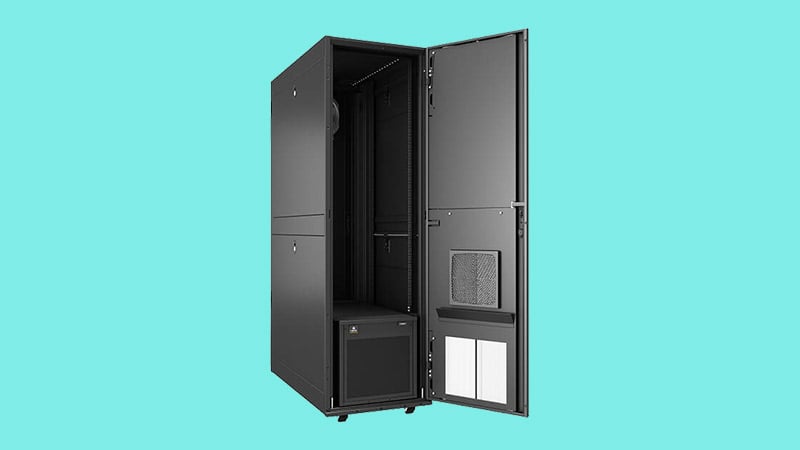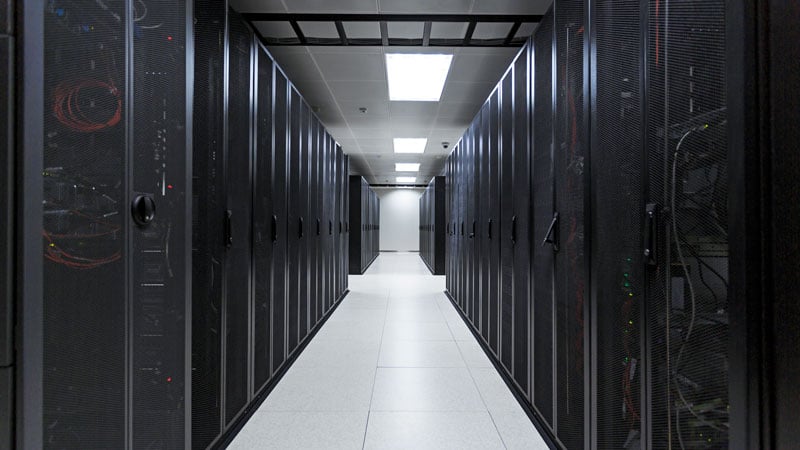The sheer scale of the 2021/2022 supply chain crisis distinguishes it from similar past events. While major supply chain problems have crippled various industries throughout history, rarely if ever has the entire world economy been so impacted.
When supply is short and demand remains high, costs increase – from upstream suppliers and downstream to end users. And the year-over-year, double-digit growth of the data center industry has combined with the global supply crisis to significantly increase the cost to build a data center.
Recently, Kevin Dalton, Chief Data Center Officer at Cumulus Data, and Dutch Wickes, Global Practice Director and Mission Critical Principal, HKS, Inc., joined me in a DatacenterDynamics (DCD) broadcast, hosted by DCD COO Dan Loosemore, to discuss this topic. Our conversation covered a lot of ground, but one thing was certain: Successful data center providers like Vertiv are keeping lines of communication with customers wide open to encourage standardization adoption and to mitigate supply chain-related cost and lead time increases.
How Much Does It Cost to Build a Data Center During a Supply Chain Crisis?
The answer to data center costs during a pandemic supply crisis depends on the type of data center. When the cost of materials is up, the cost to build a data center also rises.
Supply chain constraints have been challenging across industries. Some commodities have stabilized, but common data center materials like lithium, copper and steel remain significantly more costly than they were last year at this time. Lead times from suppliers have increased across materials and components ranging from mechanical and electrical systems to components that were traditionally readily available, such as insulation and small microchips. Unavailability of materials and components from suppliers can lead to disruption in data center construction.
Besides long lead times and high costs of component parts, the lack of expert laborers is having a downstream effect on the costs end users pay. Data center demand is growing much faster than the industry can attract new, qualified talent. Professionals across the board, from mechanical and electrical engineers to electricians, remain in extremely high demand, but more experts are retiring than are entering the field. The entire data center industry has had trouble keeping up.
Commodities costs, lead times and labor shortages mean that the cost to build a data center in 2022 increased significantly – if buyers insist on a traditional, bespoke design. Vertiv and other data center industry leaders are using open communication and encouraging standardization to lessen supply chain constraints.
Prefabricated Modular Data Centers: Standardization Helps Mitigate Supply Slowdowns
No one likes long lead times. Vertiv collaborates with customers and clients to help plan and forecast for both current and future needs. We are doing the same thing with our suppliers, querying them about their supply chain and its effect on us and even qualifying alternative fourth- or fifth-tier suppliers as needed to meet demand. Communication is one side of the coin, and standardization is the other.
Standardization allows more of the data center design and build process to operate outside human intervention or error. Standardization is easier for end users to understand, easier for architects to design and easier for technicians to install and maintain. Using standardized digital architectural modeling software, like BIM360 objects, for example, helps remove the reliance on a single individual having to pass vital information person-to-person. This planning tool helps speed up the process and helps mitigate or avoid problems like loss of institutional knowledge when someone retires.
Standardization lets customers build quickly and lease the space out to their customers faster. The supply chain issues have further emphasized the need for standardization. Off-the-shelf components are increasingly reliable and save significant time compared to custom components. Keeping things simpler is essential; the more items that come prefabricated or can be built off-site and delivered pre-assembled, the more expenses can be offset. It is no wonder that data center building technology is trending toward modularity.
OMDIA data collected from a survey of 228 global companies operating their own data centers revealed that 99% plan to include prefabricated modular data centers (PMDCs) in their 2022 data center technology and infrastructure investments. Custom-built data centers can take years before full functionality, while factory-built and -tested data centers can be built in parallel with the data center site and be operational in under a year. PMDCs also allow a company to pivot its strategy in response to market changes: Because lead times are shorter, decisions can be made at a later hour as the market shifts. Individualized solutions remain the sensible option in some applications, but modularity is an answer to many of the industry’s current challenges.
Practical Sustainability
Environmental, social and governance (ESG) commitments are top-of-mind for many corporations. But amidst a supply chain crisis, ESG is often better served by bringing suppliers in early to R&D and forecasting conversations. Sustainable products or parts can often come at a “green premium,” making them more costly than traditional alternatives and which can sometimes increase delays. During economic instability, it is essential to understand the ROI of any sustainable technology and invest strategically. Vertiv works with clients to find solutions that strike the balance between environmental friendliness and cost-effectiveness.
The climate is changing, and some geographies are reaching the historic 20-year maximum or minimum temperatures regularly. Vertiv works with clients to find efficient, affordable solutions. In Colorado, for example, drawing water from the ailing Colorado River is unsustainable. Areas inundated with large data centers are running through the resources that make the area attractive to data centers in the first place. Vertiv partners with its clients to invest in innovative technologies like liquid cooling to increase efficiency and to minimize environmental impact. The “this is how we’ve always done it” mindset is a rut that no industry can afford to maintain. Data centers are a fact of life, so they must coexist with the environment.
It was a privilege to speak alongside Kevin, Dutch and Dan on this timely topic. Register for the on-demand webcast replay, and learn more about how Vertiv’s prefabricated modular data centers and other solutions are helping clients weather the current supply chain crisis.







